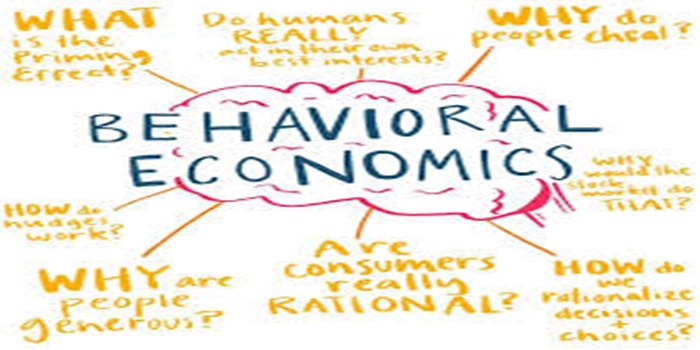In this article, we discussed the meaning of behavioral economics, the principles, the examples, we talked about the benefits.
Definition
Behavioral economics is a field of study that combines psychology, sociology, and economics to understand how people make decisions. It differs from traditional economic theory, which assumes people are rational.
Behavioral economics It involves
Behavioral economics examines how emotions, social norms, and cognitive biases influence decision making.
It uses these insights to predict economic behavior and improve the actions of individuals and institutions.
It can help explain anomalies in traditional economic models.
Applications
Behavioral economics is used in many industries, including sales, health, and public policy.
For example, sales teams can use it to improve customer experience and increase response rates.
Health systems can use it to increase organ donation.
Related fields
Behavioral economics can be divided into behavioral decision theory and behavioral game theory.
It’s informed by psychological, sociological, and political theories.
Career paths
A master’s degree in behavioral economics can lead to careers in economic consulting, public policy, political campaigns, and more.
Behavioral economics is based on the idea that people are not always rational and that their decisions are influenced by a variety of factors.
Some principles of behavioral economics include:
Loss dislike: People tend to dislike losses more than they like gains.
Bounded rationality: People’s thinking is limited by their time, information, and capacity.
Heuristics: People use mental shortcuts to make decisions instead of more reasoned approaches.
Framing: Presenting information in a way that appeals to people’s emotions.
Securing: Being careful about what is presented to people, especially early in an interaction.
Prospect theory: People make decisions based on potential gains and losses, not final outcomes.
Choice architecture: The way choices are presented to people influences their decisions.
Cognitive dissonance: People strive for consistency in their beliefs, attitudes, and behaviors.
Behavioral economics can be applied in a variety of fields, including marketing, policymaking, and service design.
Examples of behavioral economics include:
Loss aversion
People tend to care more about losses than gains of equal value. For example, someone might be more upset about losing $100 than happy about gaining $100.
Endowment effect
People value items they own more than similar items owned by others.
Framing
The way options are presented can influence people’s choices. For example, offering a few cheaper options can make a more expensive option seem more appealing.
Cognitive bias
Systematic errors in thinking that cause judgments to differ from what’s considered desirable or correct.
Bounded rationality
People’s ability to make good decisions is limited by several factors. As a result, people often settle for a satisfactory solution instead of the best one.
Choice architecture
The way product options are presented can influence purchase decisions. For example, displaying complementary products together can encourage people to buy both.
Decoy effect
A pricing strategy that uses a third similar but less attractive option to encourage people to switch to a more expensive or profitable option.
Benefits of behavioral economics:
More realistic understanding of human behavior:
Unlike traditional economics, which assumes perfect rationality, behavioral economics incorporates psychological factors like heuristics, framing effects, and loss aversion to provide a more accurate picture of how people make decisions in real-world situations.
Effective policy design:
By understanding cognitive biases, policymakers can design policies that “nudge” people towards beneficial choices, like encouraging organ donation by setting opt-out as the default option.
Improved marketing strategies:
Businesses can leverage behavioral insights to create more persuasive marketing campaigns by tailoring messages to customers’ cognitive biases and understanding how to frame choices to influence decision-making.
Enhanced financial literacy:
Financial institutions can use behavioral economics to design products and services that help individuals make better financial decisions, like automatic savings plans to combat procrastination.
Promoting positive social change:
Behavioral insights can be applied to encourage healthy behaviors like exercise, eating nutritious food, or reducing energy consumption.
Innovation in product design:
Companies can use behavioral economics to design products and services that are more intuitive and user-friendly, taking into account how people perceive and interact with them.
Conclusion
Behavioral economics is a field that combines psychology and economics to study how people actually make decisions in real-world situations, challenging the traditional assumption of perfect rationality by considering factors like emotions, biases, and environmental influences, often revealing that people make choices that are not always in their best interest; key concepts include framing, loss aversion, and mental accounting, with applications in policy design and marketing to “nudge” people towards better choices.
READ: Managerial Economics


